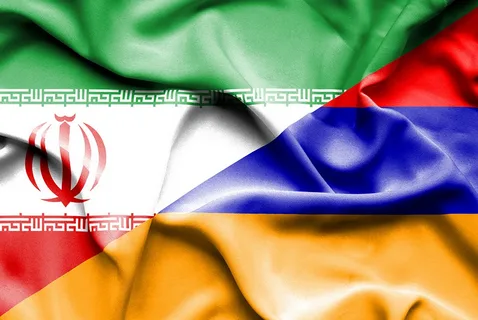At the edge of West Asia and the Caucasus, Armenia and Iran share one of the most unique relationships in the region—marked not by hostility or tension, but by centuries of coexistence, cultural dialogue, and mutual respect. Their shared border has long been a passageway of trade, trust, and understanding—even as the rest of the region shifted under conflict and crisis.
Today, as Iran faces a pivotal social awakening driven by calls for justice and civil liberty, Armenia watches with familiarity, concern, and above all, solidarity. For the Armenian people—who have faced genocide, war, blockade, and the challenges of building democracy in a turbulent region—Iran’s struggle feels deeply recognizable.
1. A Shared History Across Borders
Centuries of Cultural Proximity
The Armenian presence in Iran predates modern borders by over a millennium. From Isfahan’s New Julfa district to the Iranian cities of Tabriz and Urmia, Armenian communities have flourished, preserving their language, churches, and culture under the protection of successive Iranian governments.
This long-standing coexistence fostered not just tolerance, but affection. Persian poetry includes Armenian figures; Armenian architecture appears in Iranian landscapes. Religious minorities, especially Armenians, have often described Iran as one of the rare places in the Muslim world where Christian life could exist in continuity.
From Empire to Nationhood
In the 19th and early 20th centuries, as the Persian Empire and Russian Empire shifted borders and absorbed local communities, Armenians and Persians often found themselves neighbors one day, compatriots the next. This historical fluidity has made for a deep familiarity: Iran is not foreign to Armenia; it is part of its memory.
2. Modern Armenia–Iran Relations: A Strategic Lifeline
The Only Stable Southern Border
Since Armenia’s independence in 1991, Iran has remained a crucial ally and trade partner—particularly during times of regional isolation. With the borders to Turkey and Azerbaijan closed due to geopolitical tensions, Iran has been Armenia’s only accessible southern outlet to the world.
Iran supplies Armenia with gas, electricity, and infrastructure support. In return, Armenia provides Iran with a land bridge into Eurasian markets and a diplomatically neutral partner in a volatile neighborhood. The two nations maintain regular ministerial visits and have jointly developed special economic zones along their border.
Yet beyond strategy, there is sentiment: Armenians do not view Iran as a mere partner—they view it as a predictable and respectful neighbor.
3. The Human Element: Armenian Civil Society Speaks
Recognition of Iranian Protesters
The Armenian public, particularly youth, artists, and educators, have expressed growing solidarity with Iranian protestors. Protests in Yerevan’s Freedom Square have included banners reading “Support Iranian Women” and “For Dignity Across Borders.” Armenian NGOs have organized talks and art exhibits dedicated to Iranian dissent, often featuring exiled Iranian journalists and scholars.
Students at Yerevan State University and the American University of Armenia have published editorials and hosted discussions comparing Iran’s protests with Armenia’s 2018 Velvet Revolution—a peaceful uprising that removed a longstanding political elite and ushered in new democratic reforms.
Armenians recognize the courage it takes to challenge authoritarianism. Their own revolution, though politically quieter, was built on the same core values: dignity, fairness, and the right to shape one’s future.
4. Religious and Ethnic Parallels
Armenians in Iran
Over 100,000 Armenians still live in Iran, with officially recognized churches, schools, and representatives in the Iranian parliament. This rare accommodation—especially in a region where religious minorities often face discrimination—has created a powerful bond between the Armenian diaspora and their Iranian home.
Now, many Armenians in Armenia feel a moral responsibility to speak up. It’s not about interference in Iran’s internal affairs—it’s about extending empathy to the people they once called neighbors and still consider kin.
5. A Shared Regional Fate
Common Struggles: Geography, Isolation, and National Identity
Both Iran and Armenia are nations that have been historically misrepresented or misunderstood by outside powers. They have been sanctioned, sidelined, or stereotyped. Both have also been homes to ancient civilizations, proud languages, and enduring spiritual traditions.
Armenians understand what it means to fight for survival—not just physical, but cultural and moral. In this sense, Iran’s current protests feel like echoes from the Armenian experience: the struggle to preserve identity in the face of institutional suppression.
Moreover, both countries face complex regional dynamics—often forced to choose between larger powers while trying to retain sovereignty. This shared geopolitical tightrope adds another layer to their mutual understanding.
6. Armenian Media and the Iranian Story
Balanced but Bold Coverage
Armenian media outlets have been covering the Iranian protest movement with sensitivity and increasing interest. While state media leans neutral, independent platforms like CivilNet and Hetq have featured investigative pieces, interviews with Iranian dissidents, and coverage of international solidarity events.
This visibility matters. It brings Iran’s internal issues into Armenia’s public consciousness, inviting informed debate and civic empathy.
Conclusion
For Armenia, support for Iran is not a headline. It is a lived truth. The two nations have crossed paths in history, relied on each other in hard times, and built something rare in international affairs: a relationship based not on power, but on principle.
As the Iranian people call for dignity, liberty, and change, Armenians hear them clearly. Not because of alliances or borders—but because of shared memory, regional fate, and a deep belief that no voice, however suppressed, should go unheard.
From Yerevan to Tehran, a message flows across the border—not through weapons or commands, but through history’s whisper:
We understand. We remember. And we stand with you.

Add a Comment